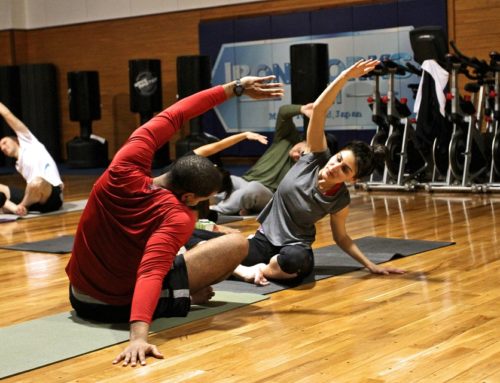From The View to CNBC, training using the Superslow method is hitting the news.
The basic principal, published in the 1990’s by Mike Mentzer, is slowing down your repetition speed.
“Mike advocated that repetitions should be performed slowly and deliberately with the weight always under full control to maximise muscle tension. In Muscles in Minutes©, he advocated a duration of about four seconds on the positive (lifting) and the same on the negative (lowering) portion of the repetition on most exercises, with a two second pause in the fully contracted position”…”Comprehensive reviews of this topic (Bruce-Low & Smith, 2007; Carpinelli et al., 2004) have supported Mike’s claim that a relatively slow cadence can produce optimal gains in strength and hypertrophy, but that ‘super slow’ (10:4 to 10:10 cadence) training does not offer additional advantages (Mike held that conducting “super slow” training beyond his recommended cadence could actually hold back the bodybuilder’s progress, because he would get tired quicker).http://www.mikementzer.com/
The best selling book, Power of 10: The Once-A-Week Slow Motion Fitness Revolution, by Adam Zinckerman, is bringing superslow back. http://informfitness.com/adam-zickerman-personal-trainer-nyc/#sthash.VIMfWuRH.dpuf,
Whether you are following Mike’s advice or Adam’s, you are sure to see good results with far less risk than the current entertainment based approached of doing as many reps as possible in XX seconds.
Not only is the SuperSlow method safer, previous studies show greater results.
“Nevertheless, when attempting to move the load explosively, forces increased by as much as 45% initially, but then decreased by 85% for most of the repetition. This is likely due to the excess force provided to overcome the inertia being so great that momentum carries the weight through the rest of the range of motion. Johnston suggested that explosive lifts would likely recruit fewer muscle fibres due to momentum and that the diminished recruitment through most of the range of motion would be less effective for enhancing muscle function. This has previously been reported by Hay et al. (1983) with arm curl exercises. A study by Tran, Docherty and Behm (2006) considered decrement in force production and rate of force development, noting significantly larger decreases following sets of 10 repetitions at a 5:5 repetition duration compared to 10 repetitions at 2:2, and 5 repetitions at 10:4 repetition durations. This larger decrease in force production suggests fatigue in a larger proportion of muscle fibres, potentially stimulating greater growth and strength/power gains. Also, Bruce-Low and Smith (2007) specifically considered the risk of injury from ballistic exercises, reporting some disturbing statistics suggesting that explosive lifting can cause injuries to the wrist, shoulder, elbow and lumbar regions. Overall, therefore, Mike’s recommendation of a relatively slow speed of movement during resistance exercise seems both efficacious and prudent according to the research findings.” http://www.mikementzer.com/
As you plan your fitness goals for 2014 the superslow method for strength and muscle growth is worthy of adding into your training.





